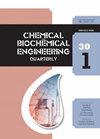Aquatic Toxicity of Polyethylene and Microcrystalline Cellulose Microbeads Used as Abrasives in Cosmetics
IF 0.9
4区 生物学
Q4 BIOTECHNOLOGY & APPLIED MICROBIOLOGY
引用次数: 0
Abstract
Microplastics have been part of personal care products for years, but due to micro - plastic pollution, many companies have replaced microplastics with natural particles, such as microcrystalline cellulose. Although natural particles are considered more envi - ronmentally friendly, their ecotoxicological profile is unknown. In this context, the aim of this study was to compare the ecotoxicity of polyethylene and microcrystalline cellu - lose microbeads, both extracted from a cosmetic product. The effects of the two types of particles on the aquatic macrophyte Lemna minor and the crustacean Daphnia magna , as well as the bioadhesion of the particles to Lemna minor were evaluated. The results showed no significant effects of either particle on the specific growth rate, root length, and chlorophyll content of Lemna minor . The bioadhesion of both types of particles to the plant biomass was comparable. Furthermore, no significant effects were observed on the mobility and body length of Daphnia magna . Thus, the investigated polyethylene and cellulose microbeads showed no significant toxic effects on the tested organisms. How - ever, due to the persistence of polyethylene in the environment, the use of polyethylene microbeads in cosmetics and personal care products should be avoided化妆品中用作磨料的聚乙烯和微晶纤维素微珠的水生毒性
本文章由计算机程序翻译,如有差异,请以英文原文为准。
求助全文
约1分钟内获得全文
求助全文
来源期刊
CiteScore
2.70
自引率
6.70%
发文量
23
审稿时长
>12 weeks
期刊介绍:
The journal provides an international forum for presentation of original papers, reviews and discussions on the latest developments in chemical and biochemical engineering. The scope of the journal is wide and no limitation except relevance to chemical and biochemical engineering is required.
The criteria for the acceptance of papers are originality, quality of work and clarity of style. All papers are subject to reviewing by at least two international experts (blind peer review).
The language of the journal is English. Final versions of the manuscripts are subject to metric (SI units and IUPAC recommendations) and English language reviewing.
Editor and Editorial board make the final decision about acceptance of a manuscript.
Page charges are excluded.

 求助内容:
求助内容: 应助结果提醒方式:
应助结果提醒方式:


